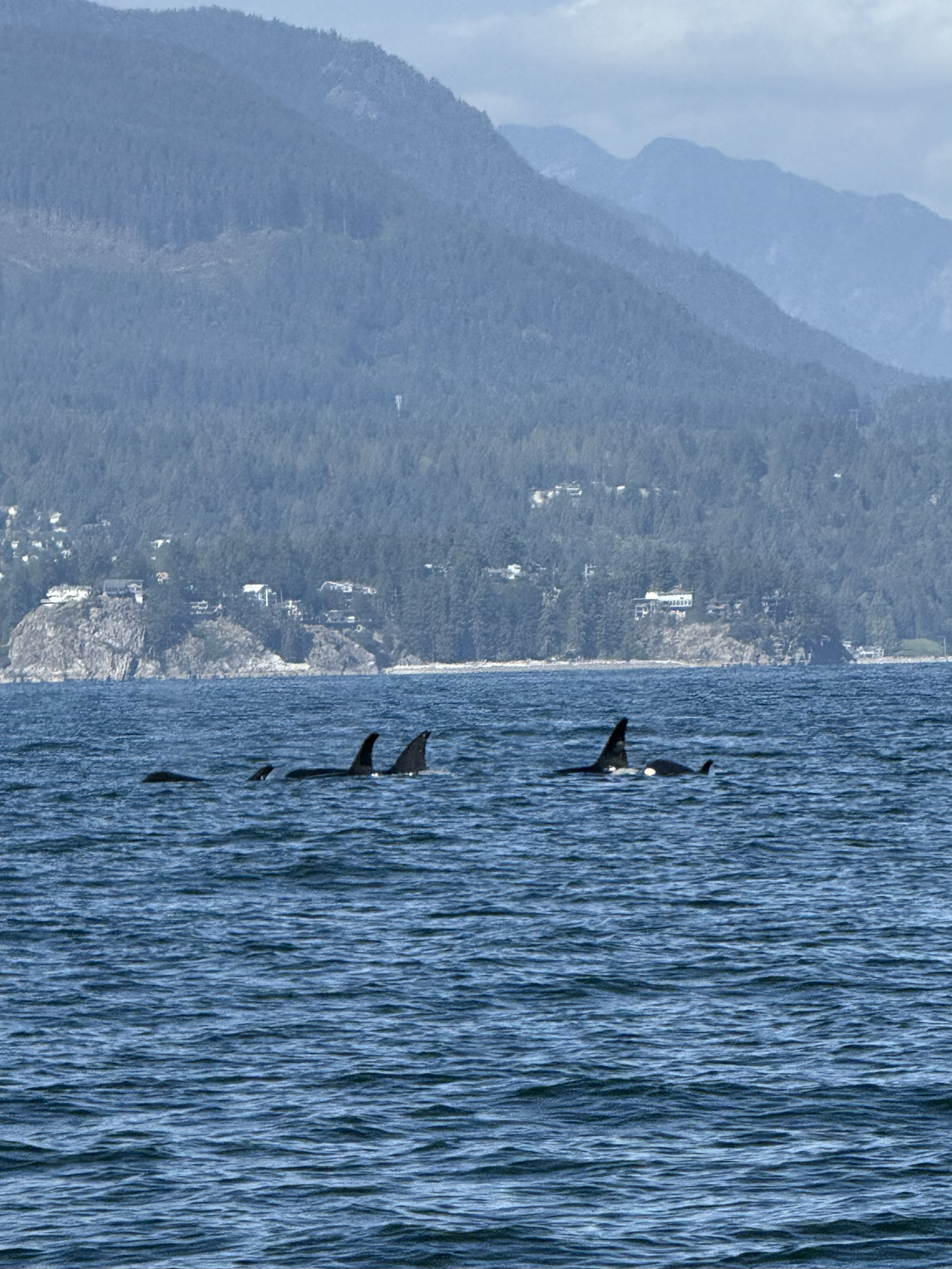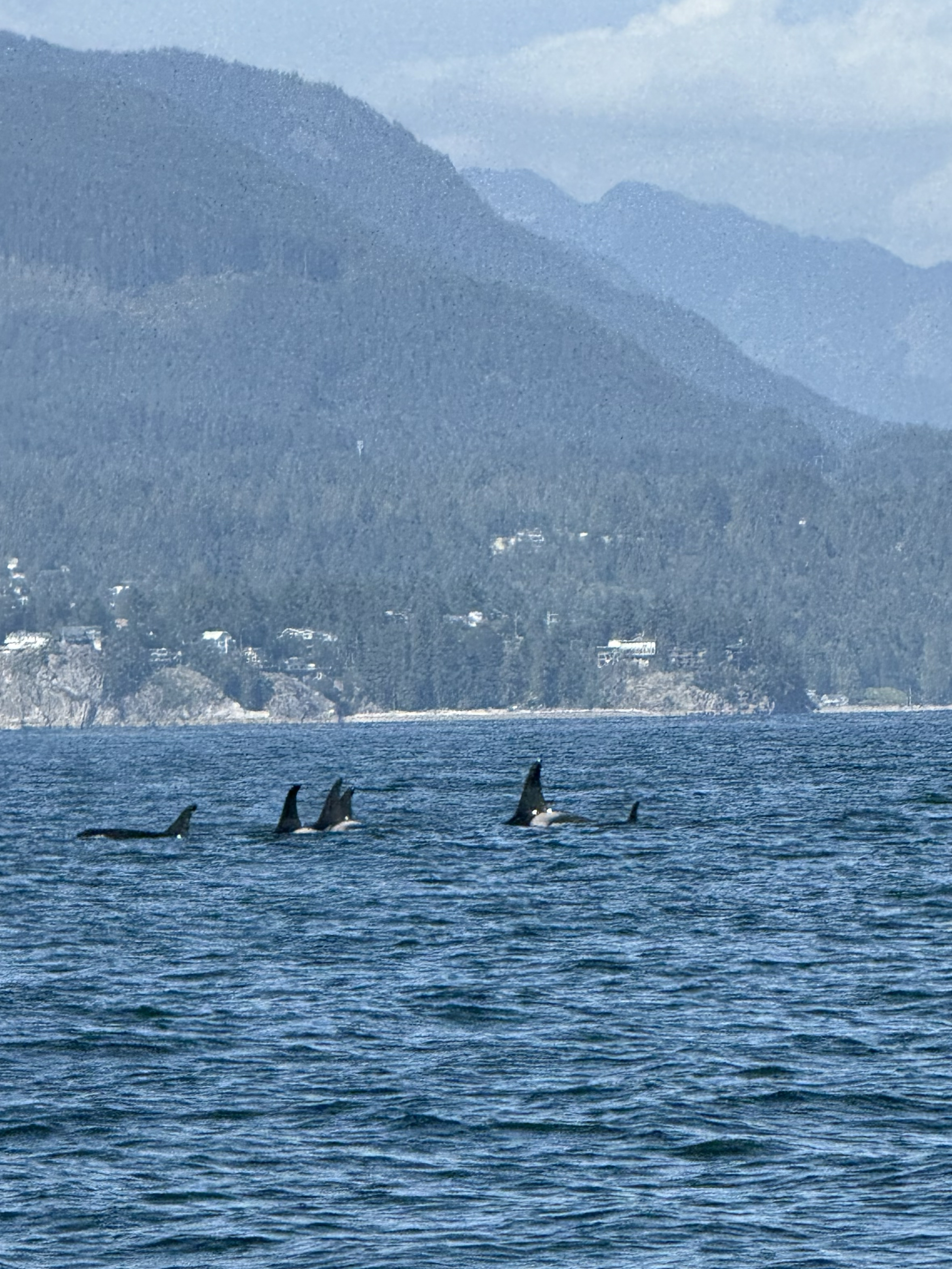Who are the Northern Residents?
Northern Resident Killer Whales are one of two resident orca populations found off British Columbia (the other being the endangered Southern Residents). Unlike Bigg’s (transient) killer whales, who hunt seals, sea lions, and porpoises, Northern Residents are fish-eating specialists.
Their diet is dominated by salmon, especially Chinook, which are high in fat and provide the energy these whales need. Their movements often follow salmon runs along B.C.’s central and northern coastlines, particularly in places like Johnstone Strait, Haida Gwaii, and the mainland inlets where salmon are most abundant.
Family bonds and culture
Northern Residents live in matrilines — stable family groups led by a mother, with offspring staying by her side for life. Several matrilines form a pod, and related pods make up larger clans.
Each pod has its own dialect of calls, passed down through generations. These dialects are unique to each pod, but pods within the same clan share similarities. It’s one of the clearest examples of animal culture — traditions and communication styles that define their identity and connect families across generations.
Why sightings are rare in the Salish Sea
Most Northern Resident Killer Whales remain in northern waters where salmon are more reliable. Occasionally, some groups, like the A5 pod, travel further south — even into Howe Sound during winter. But compared to Bigg’s Killer Whales, who are seen in the Salish Sea quite frequently, Northern Resident encounters are unusual.
That’s why this September felt so special: we were able to witness these iconic whales in waters where they are only occasional visitors.
Why it matters
These sightings are more than exciting moments for us — they are a reminder of how deeply connected Northern Residents are to the health of salmon populations. Protecting salmon means protecting the whales, and by extension, the entire coastal ecosystem that depends on them.
Conservation efforts across B.C. to restore salmon habitat and ensure healthy runs are not only important for people, but also for the survival of these highly intelligent animals.
Every tour is different
One of the things we love most about being on the water is that no two tours are alike. And sometimes — if you’re very lucky — you might find yourself sharing the Salish Sea with a pod of Northern Residents passing through.
It’s a powerful reminder that the ocean is always full of surprises, and every trip carries the possibility of something extraordinary.

